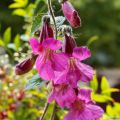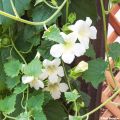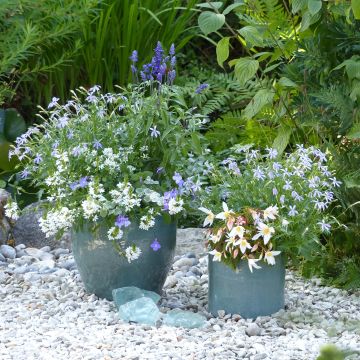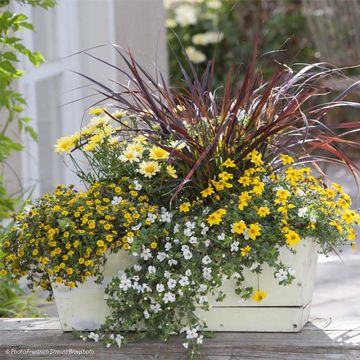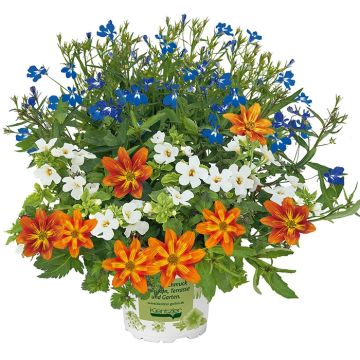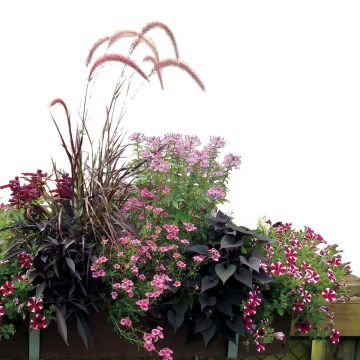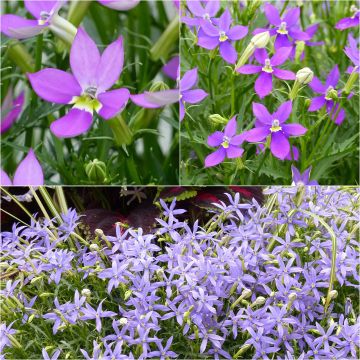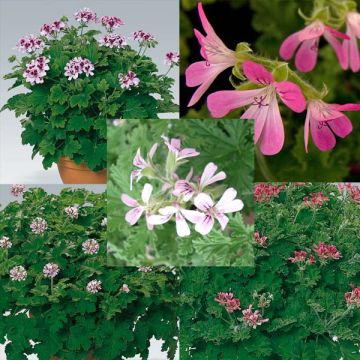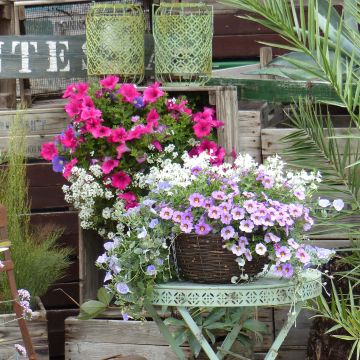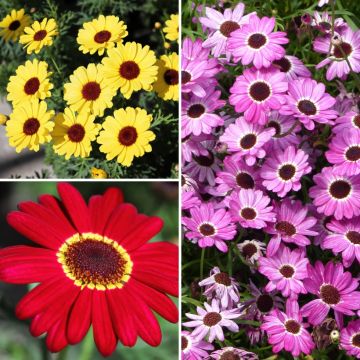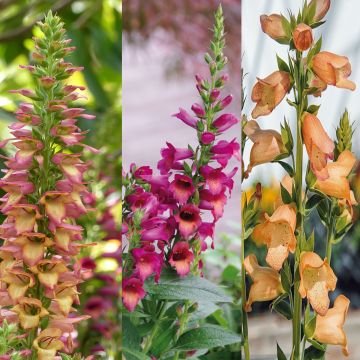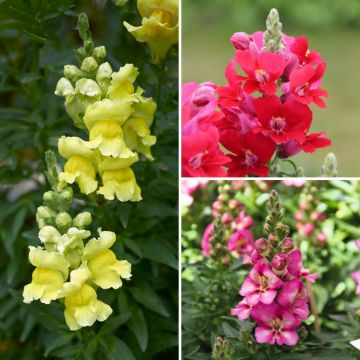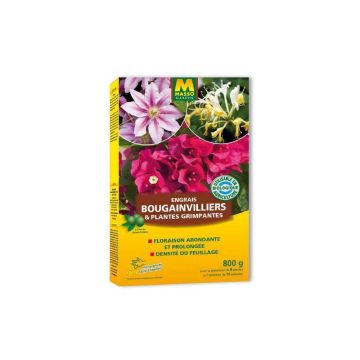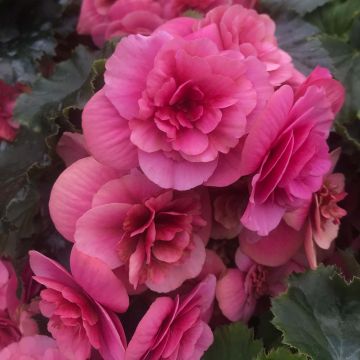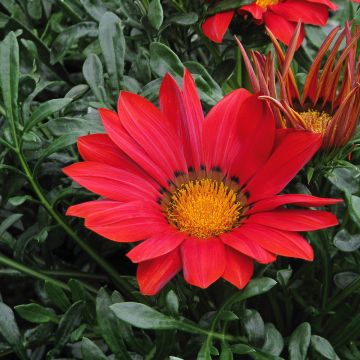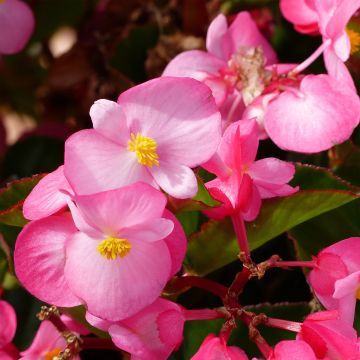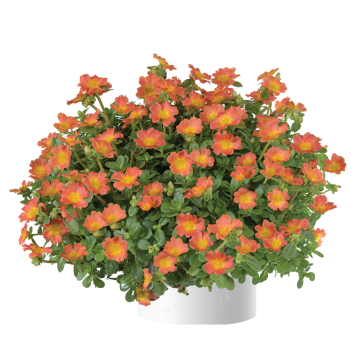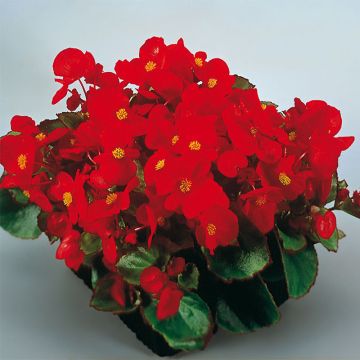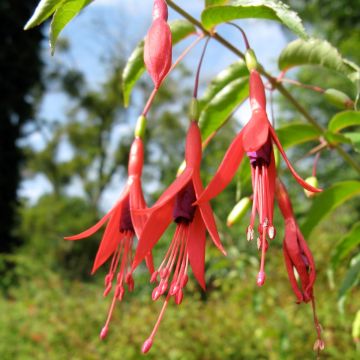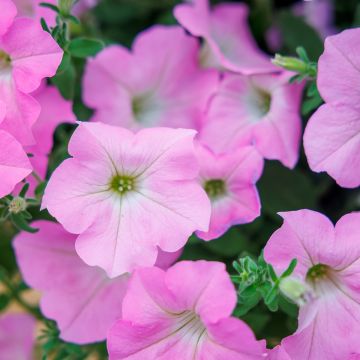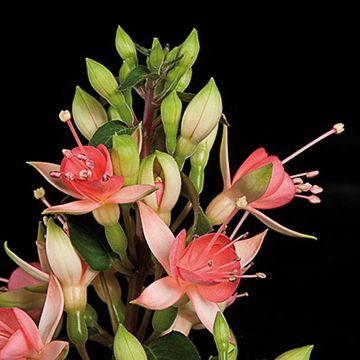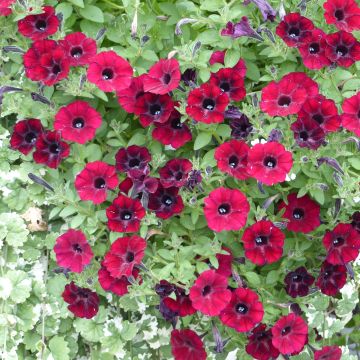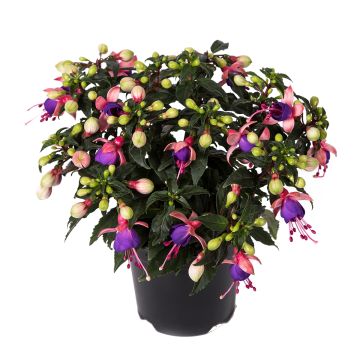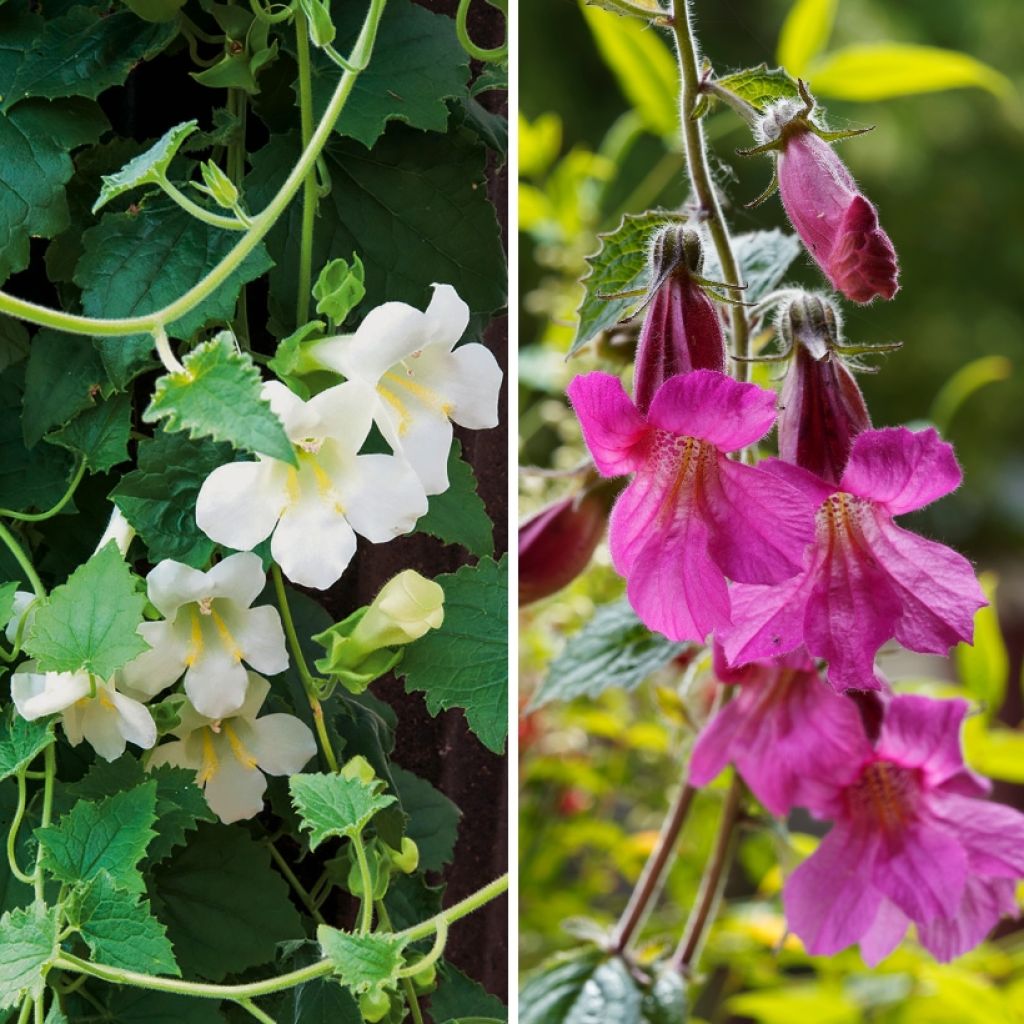

Lofos Collection - Lophospermum scandens
Lofos Collection - Lophospermum scandens
Lophospermum scandens Rosea, Album
Climbing Gloxinia, Creeping Gloxinia, Mexican Twining Snapdragon, Climbing Foxglove
This item cannot be shipped to the selected country
Delivery charge from €5.90
More information
Schedule delivery date,
and select date in basket
This plant carries a 6 months recovery warranty
More information
We guarantee the quality of our plants for a full growing cycle, and will replace at our expense any plant that fails to recover under normal climatic and planting conditions.
From €5.90 for pickup delivery and €6.90 for home delivery
Express home delivery from €8.90.
Does this plant fit my garden?
Set up your Plantfit profile →
Collection items (3 plants)
Description
The Lophospermum Collection - Climbing asarina brings together two different varieties of Lophospermum scandens that produce delicate trumpet-shaped flowers. These are semi-hardy climbing perennial plants, often grown as annuals due to their low resistance to cold. Their flowers appear from June and continuously renew until October, adding a touch of lovely colour to the garden or terrace. They adapt to different types of soils, provided they are well-drained and slightly acidic to neutral. Climbing asarinas are used to adorn trellises or in hanging displays where their trailing habit is highlighted. Prefer a sunny exposure for optimal flowering, and be sure to protect them from winter frosts.
The collection consists of:
2 plug plants of Lophospermum scandens 'Rosea': A climbing plant reaching 2 to 3 m in height, with delicate pink trumpet-shaped flowers. Abundant flowering from June to October.
1 plug plant of Lophospermum scandens 'Album': A variety with white flowers, identical to the previous one in terms of size and flowering period.
Climbing asarinas can be planted in spring after the last frosts. They thrive in borders, pots, or on trellises and pergolas. Space the plants 30 to 40 cm apart to encourage good air circulation and harmonious growth. For pot or hanging use, choose a rich and well-drained compost. In open ground, plant them in light soil rich in organic matter (humus or compost). The varieties 'Rosea' and 'Album' can be planted together to create a beautiful cascade of colours.
Create an elegant and colourful composition by pairing the climbing asarinas from this collection with other annual climbing plants such as Ipomoea purpurea 'Shadow Dance' (Morning Glory) with its large funnel-shaped flowers in shades of purple and white. Thunbergia alata (Black-eyed Susans), with its bright yellow or orange flowers and dark centre, can be mixed with the asarinas for a vibrant colour cascade effect. Also consider Eccremocarpus scaber with its tubular flowers in red, orange, or yellow, to enhance the pastel shades of the asarinas with an exotic touch.
Note: Please be aware that our young plug plants are products intended for experienced gardeners: upon receipt, pot them up and store them under cover (veranda, greenhouse, cold frame...) at a temperature above 14°C for a few weeks before being installed outdoors once the risk of frost has passed.
Report an error about the product description
Plant habit
Flowering
Foliage
Botanical data
Lophospermum
scandens
Rosea, Album
Plantaginaceae
Climbing Gloxinia, Creeping Gloxinia, Mexican Twining Snapdragon, Climbing Foxglove
Asarina scandens Rosea, Asarina scandens Album
Cultivar or hybrid
Other Annual collection
Planting and care
Lophospermum scandens 'Rosea' and 'Album' can be grown in pots or in the ground, depending on the space available and the desired effect. In pots, they require rich and well-drained soil, preferably mixed with a bit of sand to improve drainage. Regular watering is essential, especially during the growth and flowering periods, but be careful not to let the substrate become waterlogged. Place them in a sunny spot, ideally facing south or west, to encourage abundant flowering.
In the ground, the climbing asarines thrive in fertile, well-drained, slightly acidic to neutral soil. They prefer a sunny to partly shaded location where they can climb on supports such as trellises, pergolas, or fences. In both cases, it is important to remember that these plants are not very hardy (hardiness zone 9b), which means they cannot withstand temperatures below -4 °C. In colder regions, they should be grown as annuals or brought in to protect them from frost in winter.
Planting period
Intended location
Care
This item has not been reviewed yet - be the first to leave a review about it.
Plug plants - Annuals
Haven't found what you were looking for?
Hardiness is the lowest winter temperature a plant can endure without suffering serious damage or even dying. However, hardiness is affected by location (a sheltered area, such as a patio), protection (winter cover) and soil type (hardiness is improved by well-drained soil).

Photo Sharing Terms & Conditions
In order to encourage gardeners to interact and share their experiences, Promesse de fleurs offers various media enabling content to be uploaded onto its Site - in particular via the ‘Photo sharing’ module.
The User agrees to refrain from:
- Posting any content that is illegal, prejudicial, insulting, racist, inciteful to hatred, revisionist, contrary to public decency, that infringes on privacy or on the privacy rights of third parties, in particular the publicity rights of persons and goods, intellectual property rights, or the right to privacy.
- Submitting content on behalf of a third party;
- Impersonate the identity of a third party and/or publish any personal information about a third party;
In general, the User undertakes to refrain from any unethical behaviour.
All Content (in particular text, comments, files, images, photos, videos, creative works, etc.), which may be subject to property or intellectual property rights, image or other private rights, shall remain the property of the User, subject to the limited rights granted by the terms of the licence granted by Promesse de fleurs as stated below. Users are at liberty to publish or not to publish such Content on the Site, notably via the ‘Photo Sharing’ facility, and accept that this Content shall be made public and freely accessible, notably on the Internet.
Users further acknowledge, undertake to have ,and guarantee that they hold all necessary rights and permissions to publish such material on the Site, in particular with regard to the legislation in force pertaining to any privacy, property, intellectual property, image, or contractual rights, or rights of any other nature. By publishing such Content on the Site, Users acknowledge accepting full liability as publishers of the Content within the meaning of the law, and grant Promesse de fleurs, free of charge, an inclusive, worldwide licence for the said Content for the entire duration of its publication, including all reproduction, representation, up/downloading, displaying, performing, transmission, and storage rights.
Users also grant permission for their name to be linked to the Content and accept that this link may not always be made available.
By engaging in posting material, Users consent to their Content becoming automatically accessible on the Internet, in particular on other sites and/or blogs and/or web pages of the Promesse de fleurs site, including in particular social pages and the Promesse de fleurs catalogue.
Users may secure the removal of entrusted content free of charge by issuing a simple request via our contact form.
The flowering period indicated on our website applies to countries and regions located in USDA zone 8 (France, the United Kingdom, Ireland, the Netherlands, etc.)
It will vary according to where you live:
- In zones 9 to 10 (Italy, Spain, Greece, etc.), flowering will occur about 2 to 4 weeks earlier.
- In zones 6 to 7 (Germany, Poland, Slovenia, and lower mountainous regions), flowering will be delayed by 2 to 3 weeks.
- In zone 5 (Central Europe, Scandinavia), blooming will be delayed by 3 to 5 weeks.
In temperate climates, pruning of spring-flowering shrubs (forsythia, spireas, etc.) should be done just after flowering.
Pruning of summer-flowering shrubs (Indian Lilac, Perovskia, etc.) can be done in winter or spring.
In cold regions as well as with frost-sensitive plants, avoid pruning too early when severe frosts may still occur.
The planting period indicated on our website applies to countries and regions located in USDA zone 8 (France, United Kingdom, Ireland, Netherlands).
It will vary according to where you live:
- In Mediterranean zones (Marseille, Madrid, Milan, etc.), autumn and winter are the best planting periods.
- In continental zones (Strasbourg, Munich, Vienna, etc.), delay planting by 2 to 3 weeks in spring and bring it forward by 2 to 4 weeks in autumn.
- In mountainous regions (the Alps, Pyrenees, Carpathians, etc.), it is best to plant in late spring (May-June) or late summer (August-September).
The harvesting period indicated on our website applies to countries and regions in USDA zone 8 (France, England, Ireland, the Netherlands).
In colder areas (Scandinavia, Poland, Austria...) fruit and vegetable harvests are likely to be delayed by 3-4 weeks.
In warmer areas (Italy, Spain, Greece, etc.), harvesting will probably take place earlier, depending on weather conditions.
The sowing periods indicated on our website apply to countries and regions within USDA Zone 8 (France, UK, Ireland, Netherlands).
In colder areas (Scandinavia, Poland, Austria...), delay any outdoor sowing by 3-4 weeks, or sow under glass.
In warmer climes (Italy, Spain, Greece, etc.), bring outdoor sowing forward by a few weeks.

































